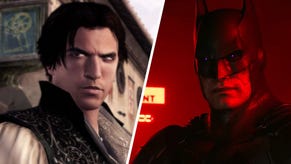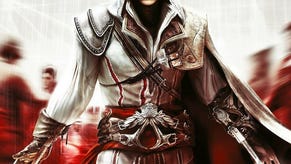Fact: Assassin's Creed II's Monteriggioni is a real place
Assassin's Creed 3 may well be swallowing your time this week, but Phil Owen's still living in the second game. Literally, as it happens. Remember Monteriggioni? This is what it's like in the real world.
Leda was quick to note that since the release of Assassin's Creed II in 2009, Monteriggioni had seen an uptick in regular visitors, most of whom she said were from Italy. She estimated that as many as two thirds of groups with teenagers knew the town from the game.
Like so many other people in the western hemisphere, I had never heard of the Italian town of Monteriggioni when I first played Assassin's Creed II in 2009, and I initially didn't wonder much about whether or not it was a real place. Sure, I was a little bit interested in the historical aspects of Assassin's Creed's fiction, but Monteriggioni was such a small place that I suppose I assumed that if it were real, it probably wasn't much worth talking about.
In the real world, Monteriggioni really isn't a big deal. It was built during the Middle Ages, in 1213, by Siena as a fortification in its war with Florence. Several battles took place there in the next 300 years or so, and two of those battles - known as The Siege of 1254 and The Betrayal of 1554 - were notable enough that locals reenacted them with a theatrical performance in 2011 during the town's annual "la Festa Medievale." It should be noted here that the fall of Monteriggioni as depicted in Assassin's Creed Brotherhood did not actually happen in our universe.
Aside from Assassin's Creed, Monteriggioni is best known for its mention in The Divine Comedy. In the poem, Dante compares the turrets of Monteriggioni to giants surrounding the abyss, which makes sense to me as those turrets on the walls of the town are the first things that catch my eye when I approached Monteriggioni by car.
Art imitating life - sort of
When I first entered the city, I was immediately struck by how different it is to its depiction in Assassin's Creed. The Piazza Roma greets you at the entrance, and that's odd in itself; there is no piazza in Ezio's Monteriggioni.
You can also immediately see that Auditore villa that's so prominent in the game is nowhere to be found. In fact, Monteriggioni is far too small for a house that large to fit inside the walls.
In the game, Monteriggioni is very symmetrical, with straight streets organizing it into a grid pattern. The real place is not symmetrical at all. The main entrance into the town sits at the corner of the piazza, making it feel lopsided. There are only a couple of real streets in the town branching off from the piazza, one that goes right down the middle from the main entrance to the back door, and another to the southeast that runs parallel to the main avenue.
The edges of the town are dominated not by buildings, but by gardens that served the town well during medieval times when enemy forces surrounded it. Today, these gardens serve a more aesthetic purpose, but the largest garden, to the north of the piazza, is still practical: visitors are charged to walk through it.
Ubisoft did portray Monteriggioni correctly in one way: it is a functional town. It has a restaurant and the obligatory gelato shop and tobacco store, and its most prominent feature is probably the church of Santa Maria Assunta, which sits on the right of the piazza. Too, there are people who actually live in houses inside the walls, although most of the folks who work there reside in the surrounding countryside.
Being an intact medieval town, Monteriggioni is a tourist destination, and one could assume that the previously mentioned facilities are there to service visitors. Said facilities are especially necessary during la Festa Medievale, as this summer's event saw 20,000 people converge on the place.
Being a tourist destination means Monteriggioni has a tourism office, and it was there that I had a conversation with a nice Albanian woman employed there named Leda Cano. To no one's surprise, she was happy to talk about Assassin's Creed.
Leda was quick to note that since the release of Assassin's Creed II in 2009, Monteriggioni had seen an uptick in regular visitors, most of whom she said were from Italy. She estimated that as many as two thirds of groups with teenagers knew the town from the game.
Amusingly, Leda told me that Ubisoft did not consult with the Monteriggioni's government when developing the game, and so when people started showing up asking where the Auditore villa was, they were completely caught off guard. Leda said they didn't mind, though. The game served as free marketing for them, and they liked that.
Naturally, the locals thought it would be a good idea to further promote the Assassin's Creed connection by selling AC merchandise and copies of the games, but Leda said Ubisoft nixed that idea without giving a reason.
Even this year, well after Monteriggioni was sacked and abandoned in Assassin's Creed Brotherhood, Leda said interest in the town continues to increase thanks to the games. We'll have to check back in in a few years to see if it starts to wane.
When I found out I would be visiting Tuscany this year - it was kind of a short-notice trip - I knew, thanks to Assassin's Creed, that I had to visit Monteriggioni. It's good to know I am not alone. That fact shouldn't surprise me, however. It's all too rare that a video game will depict a real place other than a major, modern city, and I feel as if being given the chance to visit a place I have only seen in a game is a privilege, even if, as in this case, the real place is not similar to its digital counterpart.









